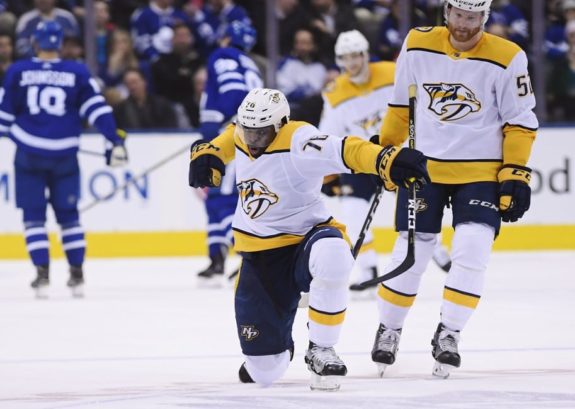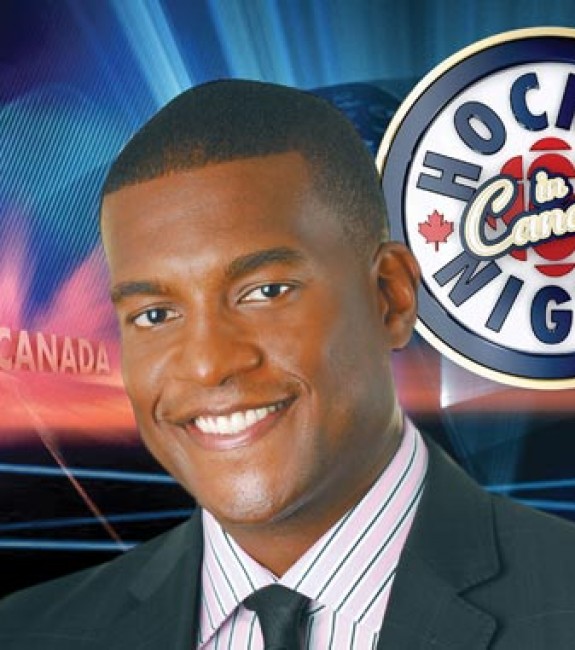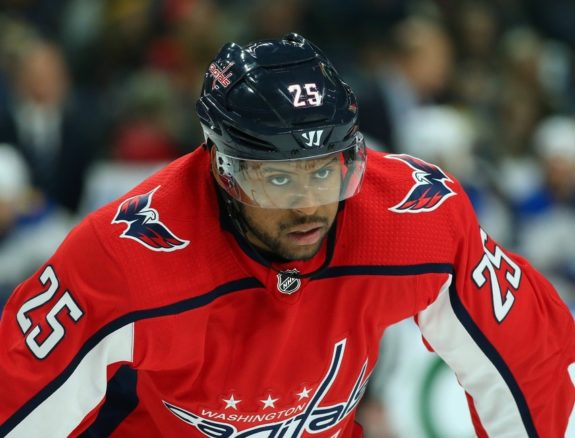Today, much of the United States will enjoy a holiday – Martin Luther King, Jr. Day. Many will celebrate the legacy of the slain civil rights leader in parades. Some will attend services commemorating Dr. King and his work. Others will ponder “the dream” that still resonates from his famous speech given at the Lincoln Memorial on Aug. 28, 1963.
Who Broke Hockey’s Color Barrier?
Sports has been an arena in which there have been many strides made in seeing Dr. King’s speech come to life in America. Most adults have heard of the racial oppression that baseball great Jackie Robinson endured when he broke the color barrier in Major League Baseball on April 15, 1947. But, how many people can name the first black hockey player? For those who can name him, can they describe the environment surrounding his breaking of hockey’s color barrier?
The NHL provides this glimpse of who broke the league’s color barrier and when: “On January 18, 1958, playing for the Boston Bruins against the Montreal Canadiens, Willie O’Ree became the first black person to play in the NHL–an extraordinary event that paved the way for future players of diverse ethnic and economic backgrounds.”
O’Ree was the first, and often being the first carries with it the burden of feeling the vitriol of those who are resistant to change. Paving the way has not been easy for any black athlete, but O’Ree walked through a door that has since widened for many to come and participate in a game that they love.
Dustin Nelson of The Hockey Writers wrote an excellent piece in Jan. 2017 which tackled the question of whether or not O’Ree should be in the Hockey Hall of Fame. Nelson noted,
He was the first black player in the NHL. That alone is a significant accomplishment. The cards were stacked against him and he made it. He not only made it, but he stood up to constant racial slurs and people trying to keep him from accomplishing what seemed impossible at the time.
Again, being first is not always easy.
Hockey Color Barrier Broken
Since O’Ree’s courageous move into the NHL, there have been many other black players to grace the NHL ice. Actually, the list is quite extensive. Currently, names like P.K. Subban of the Nashville Predators and Wayne Simmonds of the Philadelphia Flyers quickly come to mind, but through the years, the league has actually had numerous persons of color.

Colorofhockey.com lists numerous black hockey players, some familiar and some not so much. It also notes, “Every NHL team has had at least two black or biracial players on their rosters. The Buffalo Sabres, Edmonton Oilers, and New York Rangers have had 12 black players don their jerseys.
While the list is numerous, the impression is that there still seems to be a lack of diversity in the NHL. Many are familiar with Kyle Okposo of the New York Islanders, Evander Kane of the San Jose Sharks and Ryan Reaves of the Vegas Golden Knights, but Color of Hockey wonders how many fans know that the 2010-11 Atlanta Thrashers (now Winnipeg Jets) at one time had 25 percent of its roster comprised of black players.
Broken, But Not Obviously
Hockey’s color barrier has been broken, but in such a way that it’s not really obvious. As recently as five years ago, questions were asked about the lack of black players in hockey.
Kevin Weekes had an 11-year career as a goaltender in the NHL. In Feb. 2014, he shared with Black Enterprise his thoughts on why there are not more black players in hockey:
There are a lot of different factors…Some of it is socio-economic, some of it is geographic, some of it is cultural. There are tons of different factors. But when all is said and done, a lot of it comes from within. Sometimes we limit ourselves by saying ‘I look at myself on TV and I don’t see anyone that looks like me so I don’t want to do that.’
Weekes drives home the point that the color barrier may be broken but it doesn’t seem like it because often there are not many black players on the ice at one time. A casual fan may tune into a random game and see Subban or Simmonds but nobody else of color. Weekes was a goaltender for the Carolina Hurricanes for three seasons and had a large presence in the community. But naming another Hurricanes player of color is not an easy task. Anthony Stewart and Derek Joslin are the only recent black Hurricanes players, and they were on the team in 2011-12.

Hockey’s Color Barrier Still a Thing for Some Fans
Divyne Apollon II is a 13-year old youth hockey player for the Metro Ample Leafs in Odenton, Md. He recently made the news and not in a good way. FOX5DC wrote that Apollon II recently received racist taunts at a youth hockey tournament. An opposing team from Pennsylvania made monkey noises, used the N-word and suggested he play basketball instead of hockey.
Hockey’s response at the NHL level was almost immediate. Also according to FOX5DC, “Washington Capitals players Devante Smith-Pelly and John Carlson heard about the incident and invited Apollon and the team to a game against the St. Louis Blues. They met the players in the locker room after the game.”
Subban also responded by sending a video message of encouragement to Apollon II.
WAND reported that in 2018, Smith-Pelly faced his own racist attack as four fans of the Blackhawks were ejected from a game after shouting “Basketball, basketball, basketball” at him during a game with the Capitals. NHL Commissioner stood behind the Blackhawks’ decision to eject the fans saying, “No one should ever have to endure such abuse at one of our games.”

The color barrier in hockey and the NHL has been broken. However, there is still a long way to go in seeing more black players at the sport’s highest level. As Weekes pointed out, young black athletes don’t often see players that look like them on TV when hockey is on. The same thing can be said for sports like NASCAR and the PGA Tour. Sure Tiger Woods made golf relevant in black communities, but golf, like hockey, has relatively few black players who are visible on a regular basis.
Most fans are respectful of all players, but there are some who are not. This is not likely to change. But, as the NHL grows, perhaps Dr. King’s dream of folks being judged by their play on the ice and not the color of their skin will be realized.